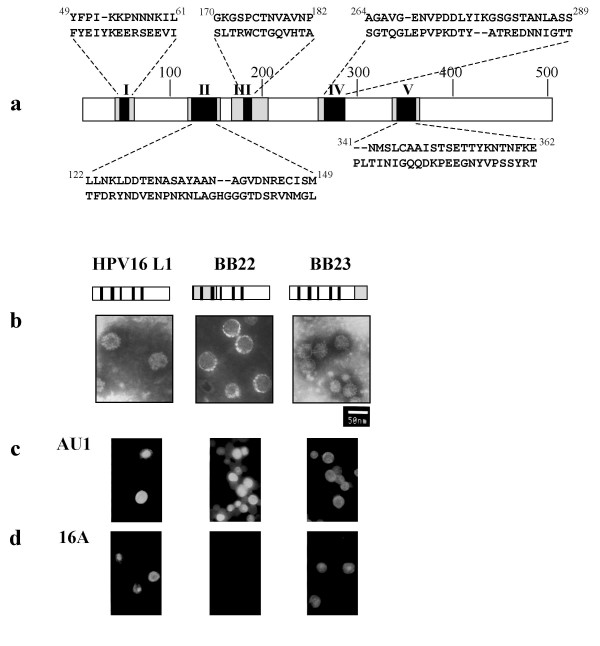Figure 2.

Immunofluorescence microscopy of Sf9 cells infected with recombinant baculoviruses expressing wild type and chimeric L1 and electron microscopy of wild type and chimeric VLPs. a, A diagram of the relative positions, corresponding amino acids and numerical designations for the 5 hypervariable regions of the surface-exposed loop domains of L1. For each aligned amino acid sequence shown, HPV16 L1 is represented above the appropriate COPV L1 sequence; the amino acid positions of the 5 HPV16 sequences are indicated as superscripts. For example, in the all five loop swap D12345 GST-L1, each of the 5 hypervariable HPV16 L1 domains replaces the corresponding COPV L1 hypervariable domains on a COPV L1 backbone. The COPV L1 backbone is not shaded. The hypervariable regions of L1 are numbered and shaded black. These fall within the surface-exposed loop domains, which are checkered gray. b, Electron micrographs of wild type and chimeric VLPs are shown. Size bar represents 50 nm. In the BB22 and BB23 L1 diagrams, the hatched regions represent the swapped COPV L1 amino acids. The hypervariable regions are designated as thick black lines. The HPV16 L1 portions are unshaded. c, d, Sf9 cells were seeded onto coverslips in plastic plates and infected with the designated recombinant baculoviruses for 3 days. Immunofluorescence microscopy was performed as described in the text. c, Samples stained with conformation-independent antibody, anti-AU1, were used as a control for protein expression; HPV-16 L1 protein was used as a positive control for the various antibody reactions. d, Immunofluorescence with monoclonal antibody 16A.
